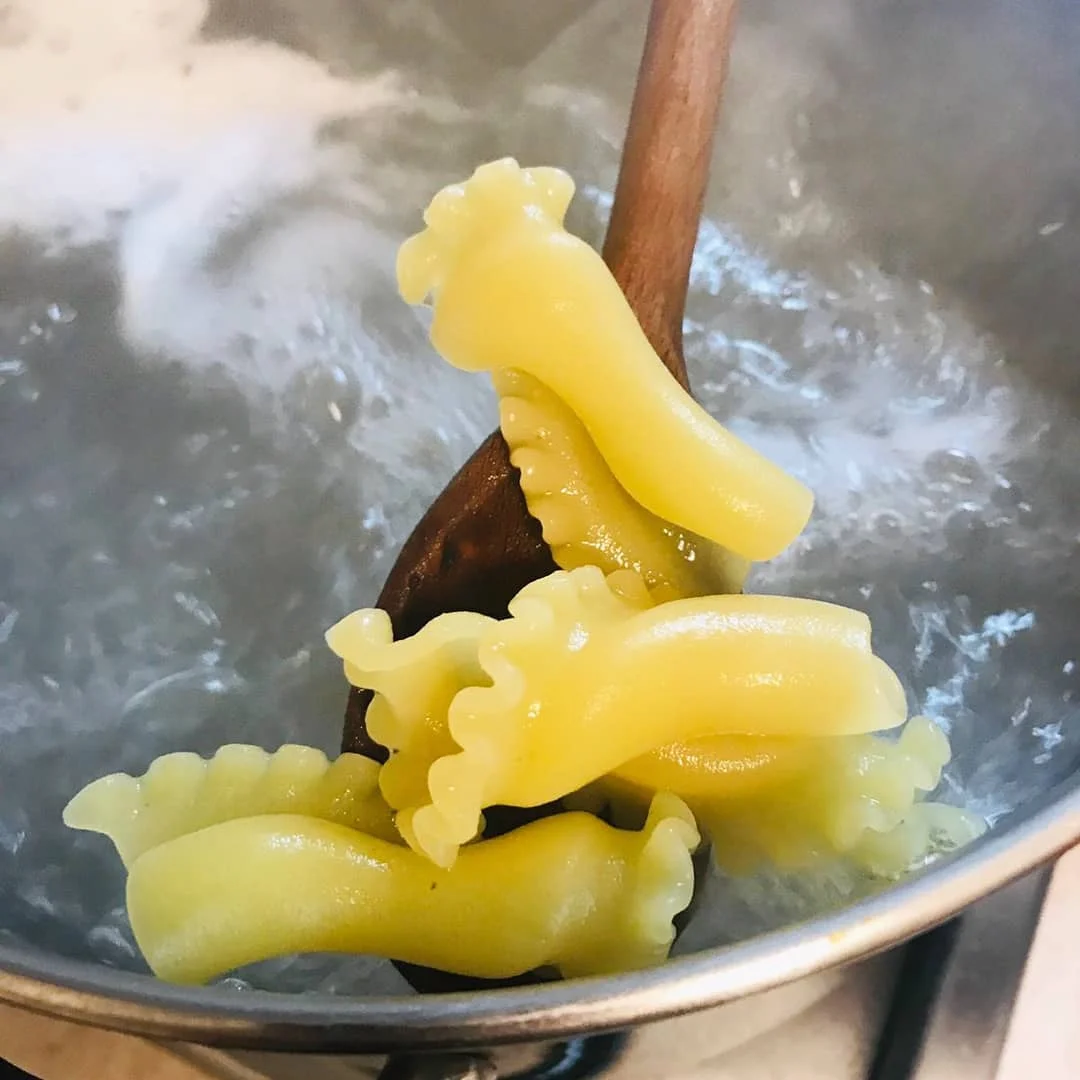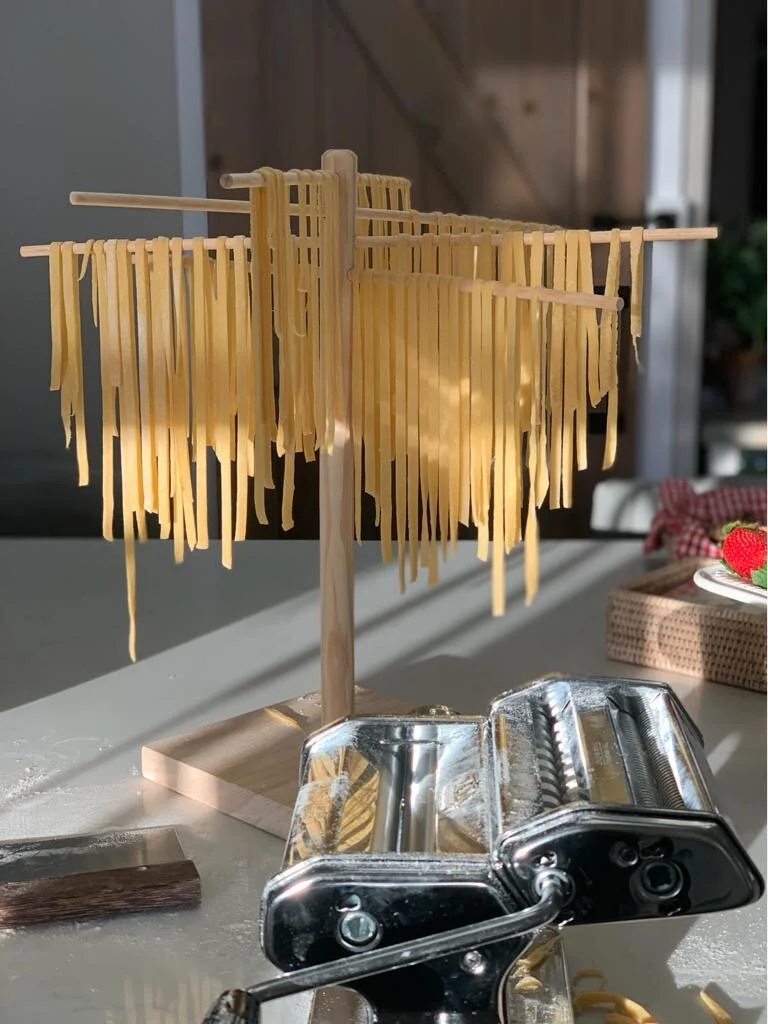How to Cook Pasta
I did not know the first thing about making pasta. In the not so distant past, I often boiled pasta to oblivion and then left it in the cooling water before draining it in a colander because I was simply too busy doing something else- something important like watching Netflix or reading US Weekly magazine. Many often think of pasta as a kind of last resort meal alternative to ordering take-out. Boil water, throw in pasta and then throw whatever is in fridge together and eat- preferably standing up while simultaneously clicking away on phone, watching Netflix and posting solipsistic photos on Instagram. Pasta really can be that easy to make. And it definitely is a viable and potentially healthful alternative to freebasing Uber Eats. It also can be incredibly elegant and infinitely more satisfying when following a few essential chronological cooking tips towards making the perfect plate of pasta.
1) Correct Shape
Form follows function and each pasta shape has distinct sauce vessel potential. Long thin strands of spaghetti, vermicelli and linguine and better suited to lighter sauces including pestos and certain white seafood sauces such as clams or mussels. Spaghetti Bolognese is not a thing in Italy because spaghetti is actually poorly suited to hold up the weight of a heavier braised sauce like Neapolitan or Bolognese ragù. Bolognese ragù is ideal with a fresh tagliatelle. Neapolitan ragù with a tubular penne or paccheri. The pasta and sauce are not two distinct elements but one unified dish and selecting the correct pasta shape for your sauce is the first step towards achieving that more perfect union.
2) Big Pot
Pasta needs ample water to properly cook so you need a big stockpot filled with ample water to ensure even cooking. Make sure you do not fill to the top with water, as it will over boil and cause a mess on your cook top. The general rule for water is 1 liter of water for every 100 grams of pasta. And generally every person eats a portion of 100 grams of pasta.
3) Roaring Boil
Once you place your pot full of water on the cook top, it needs to reach a roaring boil before you add your pasta. You can cover the pot to accelerate boiling but you must remember to always cook pasta uncovered.
4) Salt
After the water has reached a roaring boil BUT before adding your pasta, you must add salt. The best salt is kosher. The general rule is 10 grams of salt for every 1 liter of water and 100 grams of pasta. The pasta water should taste like seawater.
5) Stir with Wooden Fork
Give the pasta a good stir with a wooden fork to make sure it does not stick together. Also the fact that it is spaciously cooking in a large pot reduces any risk of sticking- always more of a possibility with fresh pasta. Make sure to keep that lid off.
6) When to Use Olive Oil
Never add olive oil to dried past boiling in water. The only time to add a small swirl of olive oil is when cooking with fresh pasta to ensure against sticking. Adding olive oil to dried pasta boiling is the worst thing to do because it will create a slick of oil on the pasta preventing the sauce from later coating the pasta.
7) Keep Up the Boil
Make sure that the water is constantly boiling. It is important for even cooking that the water maintains the same piping hot boiling temperature. The pasta will turn out flaccid if it has cooked in simmering water.
8) Al Dente
Now most of the outside world knows that the preferred texture of cooked pasta is al dente or to the teeth. You can discard any old wives tales about throwing strands of pasta onto the wall to determine whether it is al dente. Each pasta shape cooks at different rates so follow package instructions and if all else fails, taste. Fresh pasta is done when it floats to the surface of the water and cooks much faster. When cooking dried pasta, error on the side of al dente, especially if you are tossing in a cooked sauce later as this will continue to cook pasta.
9) Draining Pasta
Immediately drain pasta when it is done. Do not leave it to sit around in rapidly cooling water. This will just create pasta mush. As you drain the pasta, you can reserve a small cup of pasta water to add to some sauces as you toss the pasta- this will help to bind pasta to sauce. Additionally once the pasta is drained it cannot sit around so work fast, ensure your mis-en-place and get ready to toss that pasta.
10) Sauce Tossing
The sauce and the pasta should be one unified dish. Those old photos of spaghetti topped with a distinct blob of red sauce is actually not how pasta should be served. Pasta should be drained and added to the simmering sauce you are making (in the case of pestos you can toss in a bowl). When you toss the pasta in the sauce it becomes one dish.
11) Serve Immediately
Pasta is eaten hot. The longer it waits, the more it loses its appeal. That is why it is important to have everything ready once your pasta is drained. The problems with pasta start if you start cooking it too early and then you have to wait around to toss in sauce or eat it. In Naples, adult children when returning home often tell there parents ‘puoi buttare la pasta mo- you can throw the pasta in the water now.’ This is Neapolitan shorthand for I’ll be home in ten minutes. Timing is everything.






